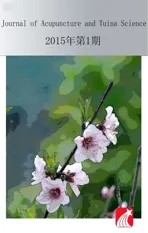Subtle adjustment of the cervical spine combined with Shu Jing Ding Xuan Decoction for cervical vertigo
2015-05-18QianGang钱刚ZouYong邹勇
Qian Gang (钱刚), Zou Yong (邹勇)
Taizhou Hospital of Traditional Chinese Medicine, Jiangsu 225300, China
Special Topic Study
Subtle adjustment of the cervical spine combined with Shu Jing Ding Xuan Decoction for cervical vertigo
Qian Gang (钱刚), Zou Yong (邹勇)
Taizhou Hospital of Traditional Chinese Medicine, Jiangsu 225300, China
Objective: To observe the effect of subtle adjustment of the cervical spine combined with Shu Jing Ding Xuan (Neck-relaxing and Dizziness-alleviating) Decoction for cervical vertigo.
Tuina; Massage; Drugs, Chinese Herbal; Manipulation, Spinal Adjustment; Vertigo; Spondylosis; Neck Pain
Cervical vertigo is a common pattern of cervical spondylosis. Over the recent years, it tends to affect more and more people, especially the young adults. Contributing factors of cervical vertigo include persistent neck flexion (due to inappropriate posture in working with computer, playing cards or watching TV, etc.), contraction of cold in air-conditioned rooms, cervical soft tissue injury and degeneration of the cervical spine. These factors can narrow the intervertebral foramen, compress the vertebral artery and cause vertebrobasilar ischemia, further resulting in vertigo, neck rigidity and nausea. There is no specific therapy for cervical vertigo. At present, intravenous dripping or oral administration of anti-vasospasm agents is often used in Western medicine[1]. We’ve treated cervical vertigo with subtle adjustment of the cervical spine combined with Shu Jing Ding Xuan (Neck-relaxing and Dizziness-alleviating) Decoction. The results are now summarized as follows.
1 Clinical Data
1.1 Diagnostic criteria
This was based on the diagnosis of cervical vertigo in the Criteria of Diagnosis and Therapeutic Effects of Diseases and Syndromes in Traditional Chinese Medicine[2]: major symptoms include headache or neck pain, dizziness, nausea and vomiting; other associated symptoms include positional vertigo, sudden collapse, falling of objects from one’s hands and blurred vision; positive result of cervical rotation test; narrowing of cervical intervertebral space, sharpness of the uncovertebral joint and stenosis of intervertebral foramen (A-P diameter) confirmed by cervical X-ray; diagnosis can be further confirmed by transcranial cerebral Doppler (TCD).
1.2 Inclusion criteria
Those who met the above diagnostic criteria and signed the informed consent were included in this study.
1.3 Exclusion criteria
Vertigo due to other medical causes needs to be ruled out. These causes may include inner ear disease, central vertigo, trauma, hemorrhage, poisoning, tumor, eye problems and metabolic or infectious diseases.
1.4 Statistical method
The statistical analysis was performed using the SPSS 17.0 version software. The measurement data were evaluated using the t-test and expressed with mean ± standard deviation (x ±s). The numeration data were evaluated using the rank sum test. A P value <0.05 indicates a statistical significance.
1.5 General materials
A total of 68 cases treated in our department between May 2012 and December 2013 were allocated into a treatment group or a control group according to stratified block randomization design. Patients in the treatment group were aged between 41 and 68 years and their duration lasted from 3 d to 2 years. Patients in the control group were aged between 39 and 65 years and their duration lasted from 1 d to 3 years. There were no between-group statistical differences in gender, age and duration (P>0.05), indicating that the two groups were comparable (Table 1).

Table 1. Between-group comparison of general materials
2 Treatment Methods
2.1 Treatment group
2.1.1 Tuina manipulation
The patient was asked to take a sitting position. The practitioner stood behind the patient.
Step 1: Applied Gun-rolling manipulation to the upper back and back of the neck for 5 min with rapid Gun-rolling and slowly moving (Figure 1). The rolling amplitude was approximately 120°. The frequency was 140 times in one minute.
Step 2: Applied 2-3 times of An-pressing and Roukneading manipulations to Baihui (GV 20), Sishencong (EX-HN 1), Taiyang (EX-HN 5), Shuaigu (GB 8), Fengchi (GB 20), Fengfu (GV 16), Tianzhu (BL 10), cervical Jiaji (EX-B 2) points, Jianjing (GB 21) and Tianzong (SI 11), (Figure 2).
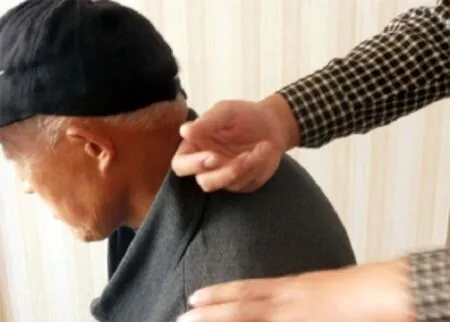
Figure 1. Gun-rolling manipulation
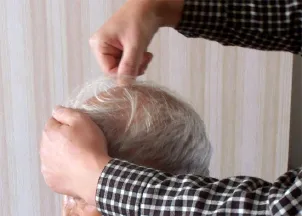
Figure 2. An-pressing and Rou-kneading using the thumb
Step 3: Applied Tui-pushing to the back of the neck and upper back using the four fingers (Figure 3); and applied Tanbo-plucking manipulation to cervical Jiaji (EX-B 2) points and Tianzong (SI 11), (Figure 4). The manipulations lasted for 3 min.
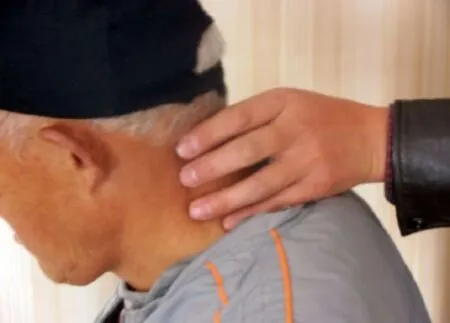
Figure 3. Tui-pushing manipulation using the four fingers
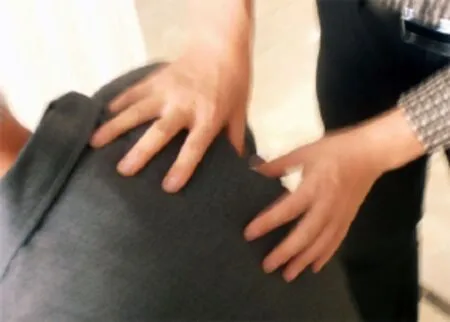
Figure 4. Tanbo-plucking manipulation
Step 4: Applied 5-8 times of Saosan-sweeping manipulation to both sides of the head (from the temporal hairline to Fengchi (GB 20), (Figure 5).
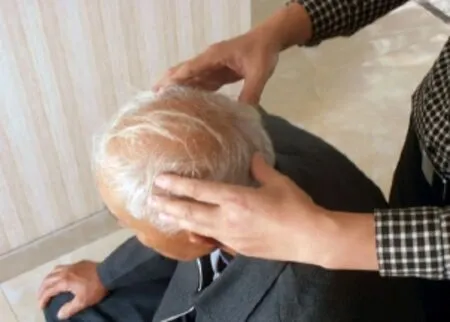
Figure 5. Saosan-sweeping manipulation
Step 5: Applied subtle adjustment of the cervical spine by rotation to correct the abnormal anatomical position. The patient was asked to take a sitting position to relax the cervical muscles. The practitioner stood behind the patient: pressed against the contralateral side of the subluxated cervical vertebra using the thumb of one hand, supported the lower mandible on the affected side using the other palm; lifted the neck for longitudinal stretch, helped to turn the patient’s neck to the affected side (approximately 10°), increased the amplitude by 3-5° until the patient’s cervical muscles were relaxed and conducted a sudden upward outward thrust using the aforementioned thumb (Figure 6) to restore the normal anatomical position.
Step 6: Applied Na-grasping manipulation to Fengchi (GB 20), Tianzhu (BL 10), Jianjing (GB 21) and muscles on both sides of the nape (Figure 7).
Cautionary notes: It’s advisable to use even, soft and coordinated manipulation and avoid sudden violent reduction. It’s not recommended to pursue the ‘crack’sound in subtle adjustment and to exceed the physiological limit. It’s important to make sure the tuina manipulations to be within the patients’ tolerance. The treatment was done once a day, 10 times for a course of treatment. The therapeutic efficacy was observed after two courses of treatment.
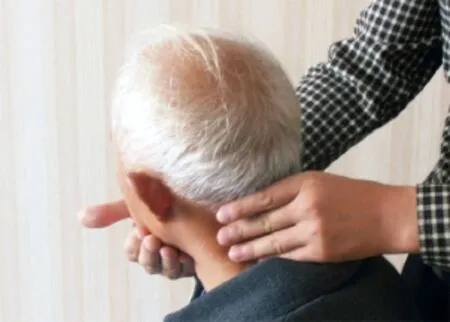
Figure 6. Subtle adjustment of the cervical spine by rotation
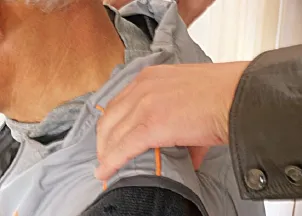
Figure 7. Na-grasping manipulation
2.1.2 Chinese herbal medicine
In addition to tuina treatment, patients also took Shu Jing Ding Xuan (Neck-relaxing and Dizziness-alleviating) Decoction.
Ingredients: Ge Gen (Radix Puerariae) 10 g, Gui Zhi (Rumulus Cinnamomi) 6 g, Chuan Xiong (Rhizoma Chanxiong) 6 g, Ban Xia (Rhizoma Pinelliae) 10 g, Chao Bai Zhu (Rhizoma Atractylodis Macrocephalae Preparata) 10 g, Tian Ma (Rhizoma Gastrodiae) 10 g, Fu Ling (Poria) 10 g, Ze Xie (Rhizoma Alismatis) 10 g and Gan Cao (Radix Licorice) 3 g.
Modifications: For hyperactivity of liver yang, combine with Gou Teng (Ramulus Uncariae cum Uncis) 10 g (decoct later) and Shi Jue Ming (Concha Haliotidis) 10 g; for deficiency of qi and blood, combine with Dang Gui (Radix Angelicae Sinensis) 10 g and Huang Qi (Radix Astragali) 10 g; for phlegm turbidity obstructing the spleen and stomach, combine with Chen Pi (Pericarpium Citri Reticulatae) 10 g and Zhu Ru (Caulis Bambusae in Taeniam) 10 g; and for qi stagnation and blood stasis,combine with Tao Ren (Semen Persicae) 10 g and Hong Hua (Flos Carthami) 6 g.
Method: Decoct with water. Take one formula for a daily dose, 10 d for a course of treatment. The therapeutic efficacy was observed after two courses of treatment.
2.2 Control group
Patients in the control group received same tuina manipulation (same method and course of treatment) as the treatment group.
3 Therapeutic Efficacy Observation
3.1 Therapeutic efficacy criteria
This was based on the therapeutic efficacy criteria for cervical vertigo in the Criteria of Diagnosis and Therapeutic Effects of Diseases and Syndromes in Traditional Chinese Medicine[2].
Recovery: Absence of vertigo and associated symptoms, flexible neck movement and return to normal work and life.
Marked effect: Almost absence or noticeable alleviation of vertigo and associated symptoms, occasional mild vertigo and can almost return to normal work and life.
Improvement: Alleviation of vertigo and associated symptoms and mild discomfort in life and work.
Failure: Signs and symptoms remain unchanged and unable to return to normal work and life.
3.2 Results
The recovery rate and total effective rate in the treatment group were 20.6% and 88.2% respectively, versus 14.7% and 73.5% in the control group, showing statistical significances between the two groups (P<0.01) and a better effect in the treatment group than that in the control group (Table 2).

Table 2. Between-group comparison of therapeutic efficacies (case)
4 Discussion
In Chinese medicine, cervical vertigo often results from obstructed flow of meridian qi, stasis blocking meridians and malnourishment of the brain collateral[3-4]. Excess pattern of vertigo is associated with internal stirring of liver wind, whereas deficiency patterns of vertigo are associated with deficiency of qi, blood and brain marrow. Other contributing factors include external contraction of wind, cold and dampness and failure of meridian qi and blood to ascend to the brain. Facet joint disorder of the cervical spine, hyperplasia of the uncovertebral joint and herniated cervical intervertebral disc can compress the vertebral artery and surrounding soft tissue directly or indirectly and irritate the sympathetic nerve, thus resulting in spasm, congestion and edema. Some patients may experience atlanto-axial joint disorder that can further cause unstable cervical vertebrae[5-6]and aggravate the vertigo.
As an important pivot for qi and blood circulation, the cervical area is a key place to connect internal Zang-fu organs with meridians, namely the Governor Vessel and Bladder, Gallbladder and Triple Energizer Meridians. Fengchi (GB 20), Tianzhu (BL 10), cervical Jiaji (EX-B 2) points and Shuaigu (GB 8) are all located in the head and neck. Fengchi (GB 20) is a crossing point of the Triple Energizer Meridian, Gallbladder Meridian and Yang Link Vessel. Stimulating Fengchi (GB 20) can soothe the liver, stop wind, ascend qi and blood to the brain and therefore alleviate vertigo. According to the Huang Di Nei Jing (Yellow Emperor’s Classic of Internal Medicine), wind-related problems and vertigo are all associated with the liver; and the head houses the mind. Points including Fengchi (GB 20) were selected according to the principle of ‘seeking the root cause’and ‘treating problems along the pathway of meridians’[7]. Modern studies have suggested that stimulating Fengchi (GB 20) can regulate the nerve plexus of vertebral artery and veins, relieve vertebrobasilar spasm, and thus increase blood supply to the brain[8-9]. Tianzhu (BL 10) literally means the pillar of heaven in Chinese. Stimulating this point and cervical Jiaji (EX-B 2) points can improve local blood circulation and increase blood supply to the brain.
This study has indicated that stimulating cervical points, especially subtle adjustment of the cervical spine can improve local anatomical position, restore mechanical equilibrium of the cervical spine and alleviate local congestion and edema. In addition, tuina manipulation can improve blood circulation of vertebral artery, increase blood supply to the brain, unblock meridians and alleviate spasms and vertigo. What’s more, this can relieve or break the vicious cycle between muscle tension and pain[10-12]. Consequently, tuina manipulation combined with herbal formula based on pattern differentiation can help with better clinical effect.
Conflict of Interest
The authors declared that there was no potential conflict of interest.
Acknowledgments
This work was supported by Taizhou Hospital of Traditional Chinese Medicine.
Statement of Informed Consent
All of the patients in the study signed the informed consent.
Received: 17 August 2014/Accepted: 22 September 2014
[1]Zhao JY, Jiang GL. On trinity regulating spirit needling in the treatment of cervical vertigo. Xibu Zhongyiyao, 2011, 24(10): 17-18.
[2]State Administration of Traditional Chinese Medicine. Criteria of Diagnosis and Therapeutic Effects of Diseases and Syndromes in Traditional Chinese Medicine. Nanjing: Nanjing University Press, 1994: 186.
[3]Li Y, Zeng W. Observation on electroacupuncture combined with Chinese herbal medicine for cervical vertigo in 92 cases. Shiyong Zhongyiyao Zazhi, 2011, 27 (10): 673-674.
[4]Hu J. Differentiation of syndrome and disease for cervical vertigo. Hebei Zhongyi, 2001, 23(8): 600-601.
[5]Wu Z. Tuina combined with point injection for cervical vertigo in 57 cases. Guangming Zhongyi, 2010, 25(9): 1680-1681.
[6]Chen SR, Song L. Clinical study on subtle atlantoaxial adjustment for cervical vertigo. Fujian Zhongyiyao, 2008, 39(6): 23-24.
[7]Zhi JL. Acupuncture combined tuina manipulation for cervical vertigo. Anmo Yu Kangfu Yixue, 2013, 4(2): 79-81.
[8]Xia QF. Observations on the efficacy of scalp acupuncture with rapid twirling in treating cervical vertigo. Shanghai Zhenjiu Zazhi, 2011, 30(3): 144-145.
[9]Wang ZS. Points injection to Fengchi (GB 20) and Dazhui (GV 14) for cervical spondylosis in healthcare communities. Huabei Meitan Yixueyuan Xuebao, 2005, 7(1): 66-67.
[10]He SY, Shen GQ. Effect of subtle adjustment of the cervical spine for cervical vertigo and neck pain. Shaanxi Zhongyi, 2011, 32(12): 1609-1611.
[11]Zhang JF, Lin Q, Yuan J. Therapeutic efficacy observation on tuina therapy for cervical spondylotic radiculopathy in adolescence: a randomized controlled trial. J Acupunct Tuina Sci, 2011, 9(4): 249-252.
[12]Zhu XQ, Wu Z. Comparison analysis and study on pure spine reposition and that combing with massage in treating cervical dizziness. Zhejiang Zhongyiyao Daxue Xuebao, 2009, 33(3): 411-412.
Translator: Han Chou-ping (韩丑萍)
颈椎微调推拿手法配合舒颈定眩汤治疗颈性眩晕
目的:观察颈椎微调推拿手法配合舒颈定眩汤治疗颈性眩晕的疗效。方法:采用随机、开放、平行对照研究。治疗组予以颈椎微调推拿手法配合舒颈定眩汤治疗,对照组单以推拿治疗。两个疗程后进行统计。结果:治疗组和对照组治愈率分别为 20.6%和 14.7%;总有效率分别为 88.2%和 73.5%。两组治愈率及总有效率差异均有统计学意义(P<0.01)。结论:颈椎微调推拿手法配合舒颈定眩汤治疗颈性眩晕疗效优于单纯颈椎微调推拿手法治疗。
推拿; 按摩; 中草药; 手法, 脊柱按摩; 眩晕; 椎关节强硬; 颈痛
R244.1
A
Author: Qian Gang, attending physician. E-mail: tzzyy05105@163.com
Qian G, Zou Y. Subtle adjustment of the cervical spine combined with Shu Jing Ding Xuan Decoction for cervical vertigo. J Acupunct Tuina Sci, 2015, 13 (1): 22-26
10.1007/s11726-015-0817-y
Methods: An open-label, randomized and parallel controlled clinical study was designed. Subtle adjustment of the cervical spine combined with Shu Jing Ding Xuan (Neck-relaxing and Dizziness-alleviating) Decoction was used for patients in the treatment group, whereas subtle adjustment alone was used for patients in the control group. The results in the two groups were statistically analyzed after two courses of treatment.
Results: The recovery rate and total effective rate in the treatment group were 20.6% and 88.2% respectively, versus 14.7% and 73.5% in the control group. The inter-group differences were statistically significant (both P<0.01).
Conclusion: Subtle adjustment of the cervical spine combined with Shu Jing Ding Xuan (Neck-relaxing and Dizzinessalleviating) Decoction is better than subtle adjustment alone for cervical vertigo.
猜你喜欢
杂志排行
Journal of Acupuncture and Tuina Science的其它文章
- Treatment of ankylosing spondylitis by fire-needle therapy plus tuina manipulations
- Electroacupuncture combined with traction and tuina for lumber intervertebral disc herniation
- Observation on therapeutic effect of electroacupuncture plus acupoint-injection for nerve root sciatica
- Effect of rapid point pressure on therapeutic efficacy and pulmonary function in patients with chronic persistent bronchial asthma
- Observation on the efficacy of acupoint massage plus moxibustion for refractory insomnia
- Observation on clinical effect of acupuncture plus Zi Shen Tiao Gan Decoction for perimenopausal insomnia
